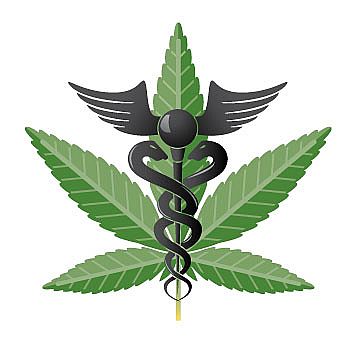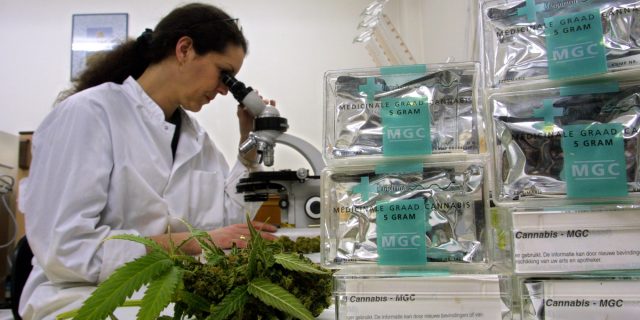Medical marijuana. Really?

Marijuana is a preparation of the Cannabis sativa plant intended for use as a psychoactive drug, medicine and more rarely as religious or spiritual ingredient. It includes the dried leaves, flowers, stems, and seeds from the hemp plant. Its main active component is tetrahydrocannabinol (THC); one of 483 known compounds in the Cannabis plant, including at least 65 other cannabinoids.
The landscape of marijuana use has been rapidly changing as more and more nations and US states are legalizing cannabis for recreational use and/or, in more places, for the treatment of medical conditions. However, there is a hot debate on whether there is enough evidence supporting its use in the wide variety of medical conditions where some recommend it.
The National Academies of Sciences, Engineering and Medicine of the United States have carried out an in-depth and exhaustive review of most recent research 1, to clarify what science really says about medical marijuana and to identify areas that still need further research. A committee reviewed more than 10,000 studies to reach nearly 100 conclusions about the current state of research on this Cannabis product. They gave more weight to articles published since a previous 1999 report. From this information, each specific research conclusion was assigned to one of five “levels of evidence”: conclusive, substantial, moderate, limited, and no/insufficient evidence. Importantly, the committee focused exclusively on the human literature, and did not consider basic research conducted using animal models.
The main result is that there is no conclusive evidence for most of the medical reasons people recommends marijuana. There was only enough evidence to support marijuana medical consumption for three important therapeutic targets: to reduce nausea and vomiting from chemotherapy, to treat chronic pain and to reduce spasms from multiple sclerosis.

These are other basic conclusions in some of the very different topics where marijuana has been involved:
Injury and death
There was evidence that cannabis use prior to driving increases the risk of being involved in an accident and in places where cannabis use is legal, there is increased risk of intoxication of children through the ingestion of marijuana.
Cancer
Smoking cannabis does not increase the risk for cancers associated with tobacco use.
Heart attack , Stroke, and Diabetes
There were no enough evidence to determine whether and how cannabis use is associated with heart attack, stroke and diabetes. However, some evidence suggests that cannabis smoking may trigger a heart attack.
Respiratory Disease
Smoking cannabis on a regular basis is associated with more frequent chronic bronchitis episodes and worse respiratory symptoms. It is unclear whether cannabis use is associated with chronic obstructive pulmonary disease, asthma, or worsened lung function.
Immunity
There is a lack of data on the effects of cannabis or cannabinoid-based therapeutics on the human immune system. There is limited evidence suggesting that cannabis smoke exposure has anti-inflammatory effects. There is insufficient evidence to support an association between cannabis use and adverse immune effects in HIV patients.
Mental Health
Cannabis use is likely to increase the risk of developing schizophrenia, other psychoses, and social anxiety disorders, and to a lesser extent depression. Heavy cannabis users are more likely to report thoughts of suicide than non-users, and increased symptoms in individuals with bipolar disorder vs. non-users.
Addiction
Evidence suggests that people who use more cannabis are more likely to be addicted, and that the younger people start, the more likely they are to develop problematic use.
Cannabis Use and the Abuse of Other Substances
There is limited evidence that cannabis consumption increases the rate of initiating other drug use, primarily the use of tobacco. However, the committee found moderate evidence to suggest that there is a link between cannabis use and the development of substance dependence and/or a substance abuse disorder for substances including alcohol, tobacco, and other illicit drugs.
Psychosocial
The committee found that learning, memory, and attention are impaired after immediate cannabis use. Limited evidence suggests that there are impairments in cognitive domains of learning, memory, and attention in individuals who have stopped smoking cannabis. In addition, there is limited evidence to suggest that cannabis use is related to impairments in subsequent academic achievement and education as well as social relationships and social roles. The committee also found limited evidence of an association between cannabis use and increased rates of unemployment and low income.
Prenatal, Perinatal, and Neonatal Exposure
Smoking cannabis during pregnancy is linked to lower birth weight in the offspring, some evidence suggests. However, the relationship with other pregnancy and childhood outcomes is unclear.
Drug policy reform has became a topic of international debate, as high-profile medical organizations and some governments and politicians call for decriminalization of illicit drugs. The academies’ report is the first in 18 years to review such a breadth of physical effects from marijuana, and is likely to fuel arguments on both sides of the marijuana debate. In these first days after its release, Cannabis advocates have focused on the report’s conclusion that cannabis possesses therapeutic value for chronic pain patients, while others emphasized the report’s warnings about car crashes and memory problems 2. At least we would be advancing if we use science-supported evidences as arguments instead of prejudices and informal opinions.
References
- Committee on the Health Effects of Marijuana (2017) The Health Effects of Cannabis and Cannabinoids: The Current State of Evidence and Recommendations for Research. National Academies Press, Washington D.C. ↩
- Jikomes N (2017) Here’s What the National Academy’s Medical Cannabis Report Actually Says. Leafly ↩
3 comments
You failed to list any of the positive effects. You seem vested. Your opinion is not relevant.
Hi José,
First of all, apologies for my delay in my response to the twit. Having little ones is always quite demanding and little time is left for “pleasure”. Following our brief discussion about the clinical potential of Marijuana, I was indeed surprised that assessment of the published literature showed conclusive? evidence for the three therapeutic areas you have already mentioned. I do believe three applications are quite a lot for just a single substance (complex mixture of substances, though), having in addition the advantage of a comprehensive knowledge about toxicology. Furthermore, if one of the potential applications (quite confirmed already, I would say) is chronic pain, it is fantastic news then. The current pain tools we can make use of have severe side effects often incompatible with having what we may call a routine life. Patients are often unable to even work, so it is quite frustrating for them. Current figures show several millions of individuals affected by chronic pain in US alone, so it is quite urgent to get approval for new clinically meaningful analgesics. Again, with marijuana there is a wealth of information accumulated throughout the years, so an oil-based medicament could be tested (not sure whether there are ongoing trials already, sorry).
In addition, I would like to know how conclusive is evidence with regard to appetite stimulation, as I remember some old work showing it was quite effective.
Anyway, great discussing with you about this topic and looking forward to hearing your opinion.
Only smoking (inferring combustion of the herbs) seems to be noted in these studies, and no mention of convection or conduction methods of intake. Also, THC seems to be a focal point, not CBD rich marijuana strains or derivatives. Any reasons these methods are not mentioned in cited studies? Just curious…..